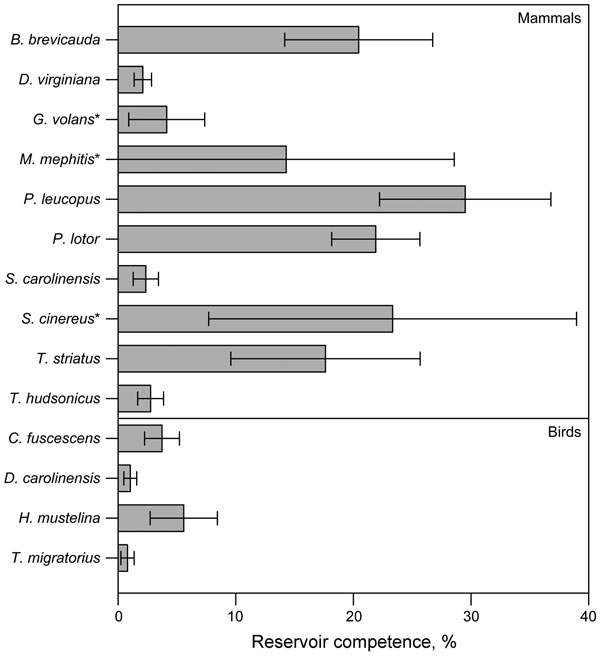Volume 18, Number 12—December 2012
Research
Reservoir Competence of Wildlife Host Species for Babesia microti
Figure

Figure. . . Mean reservoir competence of 14 host species (10 mammals and 4 birds) for Babesia microti, southeastern New York, USA, 2008–2010. Error bars indicate SE. Reservoir competence is defined as the mean percentage of ticks infected by any individual host of a given species. Host species with <10 individual hosts sampled are indicated by an asterisk. See Table 1 for sample sizes. Single-letter abbreviations for genera along the left indicate Blarina, Didelphis, Glaucomys, Mephitis, Peromyscus, Procyon, Sciurus, Sorex, Tamias, Tamiasciurus, Catharus, Dumetella, Hylocichla, and Turdus, respectively.
Page created: November 20, 2012
Page updated: November 20, 2012
Page reviewed: November 20, 2012
The conclusions, findings, and opinions expressed by authors contributing to this journal do not necessarily reflect the official position of the U.S. Department of Health and Human Services, the Public Health Service, the Centers for Disease Control and Prevention, or the authors' affiliated institutions. Use of trade names is for identification only and does not imply endorsement by any of the groups named above.